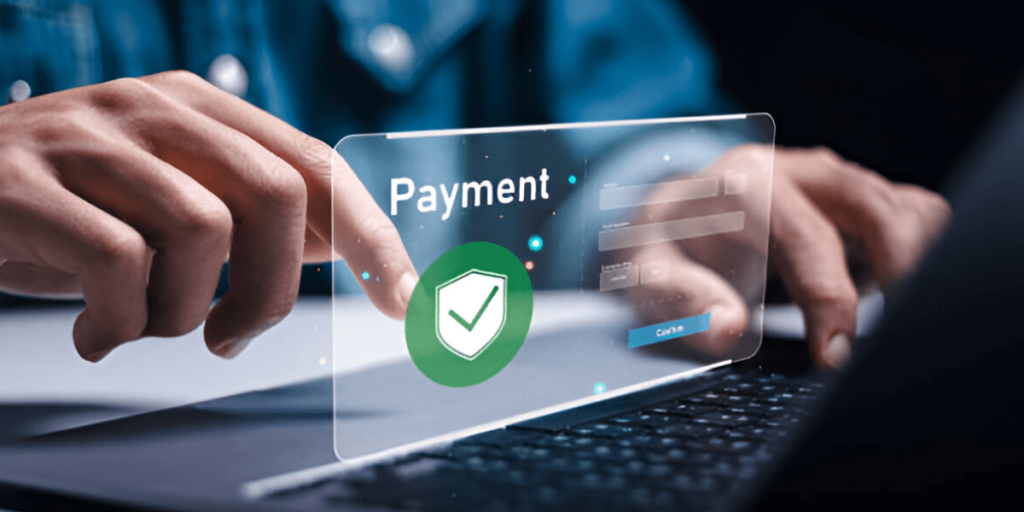Pay-per-click PPC advertising for B2B companies is one of the most effective digital marketing strategies for generating qualified leads and accelerating the sales pipeline. In the B2B landscape, buying decisions are often complex, involving multiple stakeholders and longer decision-making processes. PPC provides a unique opportunity to reach decision-makers at different stages of the buyer journey, from awareness to consideration and finally, conversion. With the ability to control ad spend, target specific job roles or industries, and generate measurable ROI, PPC campaigns offer precision and flexibility. Additionally, PPC enables quick testing and feedback, making it easier to optimize campaigns based on performance. This adaptability is crucial in B2B environments where industry trends and client needs shift frequently. Whether you’re promoting software-as-a-service (SaaS), manufacturing solutions, or IT consulting, PPC can position your brand in front of the right people at the right time.
How B2B PPC Differs from B2C Campaigns
Understanding the differences between B2B and B2C PPC campaigns is key to creating a successful advertising strategy. B2C campaigns typically aim for instant conversions and appeal to broad audiences using emotional triggers and product-focused messaging. On the other hand, PPC advertising for B2B must account for rational decision-making processes, budgetary constraints, and the involvement of multiple decision-makers within a company. B2B buyers are looking for detailed, value-driven content that speaks to their challenges and business goals. This makes targeting, ad messaging, and landing page content more nuanced. Additionally, the conversion path in B2B PPC is not always immediate—often involving gated content downloads, webinar signups, or consultation bookings instead of direct purchases. Therefore, success in B2B PPC means nurturing relationships over time, maintaining consistent messaging, and aligning campaigns with complex sales funnels.
Choosing the Right Platforms for B2B PPC
Selecting the most suitable advertising platforms is a foundational step in PPC success. For B2B campaigns, Google Ads remains a primary channel due to its ability to capture user intent through search queries. Professionals searching for solutions on Google often exhibit strong buying signals. However, LinkedIn Ads provides unparalleled targeting capabilities, allowing you to reach users based on job title, company size, seniority, industry, and even specific skills. This is especially valuable when you’re targeting decision-makers or niche B2B segments. Microsoft Ads can also offer a competitive advantage, particularly in markets where competition on Google is saturated. Additionally, platforms like Quora, Reddit, and industry-specific directories may be leveraged for targeted remarketing or brand awareness. PPC advertising for B2B becomes more powerful when you diversify platform usage based on audience behavior and align each channel with specific campaign goals, whether that’s lead generation, nurturing, or brand positioning.
Crafting High-Intent Keywords for B2B Success
Keyword research forms the core of any successful PPC campaign. In B2B advertising, keyword strategies must prioritize specificity and user intent. Broad keywords like “business software” may attract unqualified clicks, while more precise terms like “best CRM software for real estate companies” can drive highly targeted traffic. Long-tail keywords, although lower in search volume, tend to result in higher conversion rates due to their specificity. It’s also important to account for different levels of the funnel—awareness-stage queries like “how to streamline supply chain management” should be treated differently than bottom-funnel keywords like “B2B supply chain software pricing.” PPC advertising for B2B must also incorporate negative keywords to filter out irrelevant traffic, such as students, job seekers, or non-commercial searches. By continually refining keyword targeting based on actual search queries and user behavior, businesses can ensure they’re spending their budgets on leads that are most likely to convert.
Ad Copy That Speaks to Business Pain Points
Writing effective ad copy for B2B requires a deep understanding of your audience’s needs, priorities, and pain points. While character limits can be restrictive, each word must be purposeful. Strong B2B ad copy directly addresses problems—such as inefficiencies, compliance risks, or outdated technologies—and offers a compelling solution. For example, a cybersecurity firm might run an ad with the headline “Eliminate Data Breach Risks with Enterprise-Grade Security” and a description that emphasizes trust, performance, and scalability. PPC advertising for B2B thrives when ads emphasize tangible business benefits like increasing ROI, saving time, or improving productivity. Calls-to-action should be strong yet relevant to the buyer’s stage in the funnel, such as “Request a Free Demo,” “Get Your Executive Report,” or “Schedule a Consultation.” Incorporating trust signals like industry certifications, awards, or notable clients in the copy can also significantly improve click-through rates and boost credibility.
Landing Pages Built for B2B Conversions

An often overlooked but critical aspect of B2B PPC success is the post-click experience. Landing pages should align closely with the ad’s messaging and user intent, guiding visitors toward a clear and singular call to action. Unlike B2C landing pages, which may focus on immediate sales, B2B landing pages should emphasize value delivery, trust, and relevance. This includes clear headlines, persuasive subheadings, benefit-focused content, and prominent forms or call scheduling tools. PPC advertising for B2B is most effective when landing pages are tailored to specific campaigns—such as different pages for various industries, job titles, or buyer stages. Trust-building elements such as client testimonials, case studies, downloadable resources, and badges of compliance or accreditation help boost conversion rates. Additionally, fast loading speeds, mobile optimization, and easy navigation are non-negotiable features for any B2B landing page seeking to convert high-intent visitors into leads.
The Role of Lead Magnets in B2B PPC
Lead magnets are one of the most effective ways to initiate relationships with potential B2B clients. These free resources—ranging from whitepapers and ebooks to industry benchmark reports and calculators—offer value in exchange for contact information. In B2B PPC campaigns, lead magnets serve as the gateway to deeper engagement and help build authority in your niche. For example, a SaaS company might use a downloadable buyer’s guide to capture early-stage prospects and nurture them over time. PPC advertising for B2B should strategically align lead magnets with buyer intent, ensuring that what’s offered is relevant and useful. High-quality lead magnets can also reduce cost-per-lead and improve conversion rates by attracting more serious prospects. Following up with automated email workflows or sales outreach helps move these leads through the funnel, turning casual browsers into informed buyers who are ready to engage in a sales conversation.
Using Retargeting to Nurture B2B Leads
Retargeting plays a vital role in any B2B PPC strategy due to the longer and more deliberate buying process. Many users won’t convert on their first visit—especially when the product or service requires substantial investment or organizational buy-in. Retargeting allows businesses to stay top-of-mind by showing relevant ads to users who’ve previously interacted with your site. These can include reminder ads for demo scheduling, testimonial-based creatives, or time-sensitive offers. PPC advertising for B2B can use segmented retargeting lists to tailor messages to different stages of the funnel—for instance, one message for users who visited a pricing page versus another for those who downloaded a whitepaper. Retargeting not only improves brand recall but also increases the chances of re-engagement and conversion by maintaining visibility across the decision-making cycle. It helps businesses make the most of their existing traffic and maximize ROI on initial clicks.
Measuring and Optimizing Campaign Performance
To achieve sustainable success, B2B PPC campaigns must be meticulously tracked, analyzed, and optimized. Beyond basic metrics like clicks and impressions, marketers should focus on conversion rate, cost-per-lead, return on ad spend (ROAS), and the lifetime value (LTV) of customers acquired through PPC. Integrating PPC data with your CRM allows for better attribution and understanding of which campaigns drive revenue versus just leads. PPC advertising for B2B must also include regular A/B testing—testing different ad creatives, headlines, landing page layouts, and calls-to-action. Platforms like Google Ads and LinkedIn provide tools to adjust bidding strategies, time-of-day targeting, and demographic filters. By continuously optimizing based on data insights, B2B marketers can refine campaigns to reduce waste, increase efficiency, and align more closely with business objectives.
Budgeting and Scaling B2B PPC Campaigns
Budget allocation is often a challenge in B2B marketing, especially when balancing brand awareness with lead generation. A well-structured PPC budget considers campaign goals, average customer acquisition cost (CAC), and the potential revenue from each lead. For example, companies selling high-ticket solutions can justify a higher cost-per-click (CPC) if those clicks convert into six-figure deals. When starting, it’s wise to launch small-scale test campaigns focused on specific segments before expanding. PPC advertising for B2B requires consistent investment in areas that show promise—scaling campaigns that deliver quality leads while pausing or adjusting underperforming ones. As campaigns mature, businesses should diversify across channels and invest in tools like AI-based bid automation or predictive analytics to scale efficiently. Proper budgeting ensures that PPC remains a profitable and repeatable engine for business growth.
Conclusion: Unlocking Growth with B2B PPC Advertising
PPC advertising for B2B is far more than just placing ads—it’s a comprehensive strategy designed to engage informed buyers, address complex needs, and support long sales cycles. From choosing the right platforms to crafting intent-driven keywords and delivering compelling landing pages, every element must work together to drive success. The B2B buying journey is longer, more intricate, and requires continuous touchpoints that PPC is uniquely positioned to provide. Retargeting, lead magnets, and CRM integrations all contribute to an ecosystem that nurtures leads and supports sales teams. With proper planning, data-driven optimization, and platform alignment, B2B PPC can transform ad spend into predictable revenue. Businesses willing to invest in precision targeting and consistent testing will find PPC an invaluable tool for reaching key decision-makers and scaling in competitive markets.
















